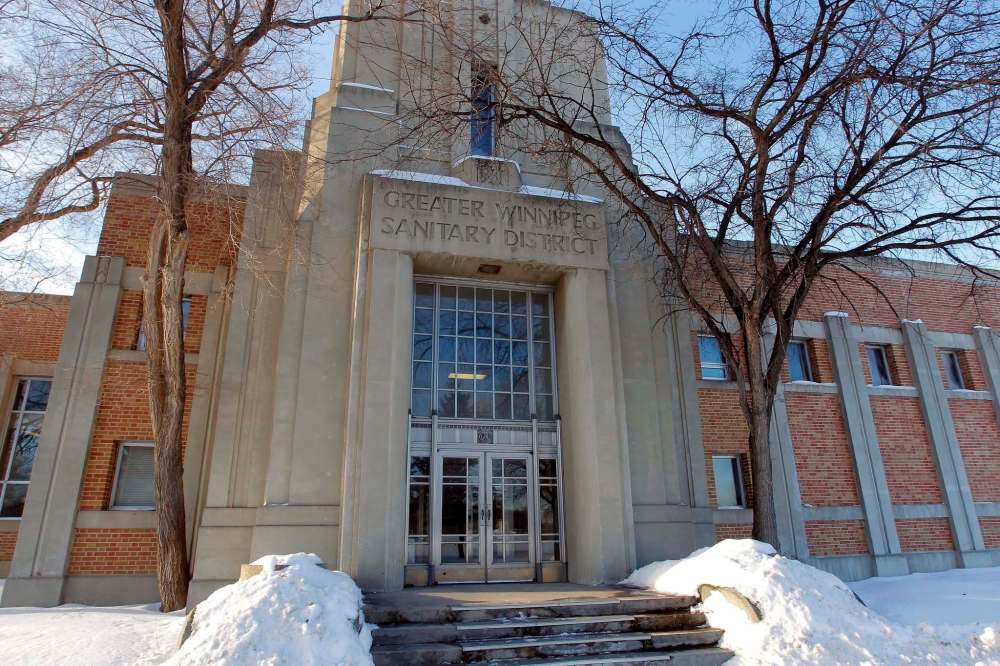City sewage woes require big-picture big money
Read this article for free:
or
Already have an account? Log in here »
To continue reading, please subscribe:
Monthly Digital Subscription
$0 for the first 4 weeks*
- Enjoy unlimited reading on winnipegfreepress.com
- Read the E-Edition, our digital replica newspaper
- Access News Break, our award-winning app
- Play interactive puzzles
*No charge for 4 weeks then price increases to the regular rate of $19.00 plus GST every four weeks. Offer available to new and qualified returning subscribers only. Cancel any time.
Monthly Digital Subscription
$4.75/week*
- Enjoy unlimited reading on winnipegfreepress.com
- Read the E-Edition, our digital replica newspaper
- Access News Break, our award-winning app
- Play interactive puzzles
*Billed as $19 plus GST every four weeks. Cancel any time.
To continue reading, please subscribe:
Add Free Press access to your Brandon Sun subscription for only an additional
$1 for the first 4 weeks*
*Your next subscription payment will increase by $1.00 and you will be charged $16.99 plus GST for four weeks. After four weeks, your payment will increase to $23.99 plus GST every four weeks.
Read unlimited articles for free today:
or
Already have an account? Log in here »
Hey there, time traveller!
This article was published 23/01/2020 (2148 days ago), so information in it may no longer be current.
Progress is slow on securing provincial funding to upgrade the City of Winnipeg’s north end sewage treatment plant.
It’s even slower — almost non-existent — when it comes to finding the cash from senior levels of government to limit the billions of litres of diluted raw sewage discharged into Winnipeg rivers every year.
The city is facing a Jan. 31 deadline from Manitoba Conservation and Climate for a plan to reduce phosphorus emissions from the north end plant. City hall has begun work on a three-phase, $1.8-billion upgrade to the facility, but the province has not committed its share of funding for the project.
Nor has the provincial government committed funding to help pay for the billions required to separate Winnipeg’s combined sewer system. Part of the reason: the city hasn’t made a formal request for it.
About 31 per cent of Winnipeg is serviced by combined sewers, which dump untreated sewage into the local rivers almost every time it rains. The city doesn’t know precisely how much untreated sewage goes into those waterways each year from combined sewers.
City officials, however, have good estimates on the volume of diluted raw sewage (sewage mixed with water runoff) that spills into the rivers. In 2018, 8.65 billion litres was discharged — enough to fill 3,462 Olympic-sized swimming pools.
What they don’t have good information on is the ratio of sewage to water. The city estimates only about four per cent is actual sewage. However, that’s based on just a single sample from a 2015 rain event.
Still, if accurate, it means about 346 million litres of undiluted raw sewage is discharged into the rivers every year on average (close to a million litres a day).
All of that ends up in Lake Winnipeg, contributing to the heavy nutrient loads that are harming the lake and creating blue-green algae blooms.
The City of Winnipeg’s treatment plants only contribute about five per cent of the phosphorus going into Lake Winnipeg, with the rest coming from other sources, including agricultural runoff.
Fixing it requires separating combined sewers into a two-pipe system: one for runoff, the other for sewage. The fix is expensive; to capture 85 per cent of the raw sewage will cost the city between $1.15 billion and $2.3 billion.
The current plan is to have the project completed by 2045. That’s a soft target, however, largely because the city still has no idea how to pay for it.
City hall has budgeted $30 million a year for combined sewer upgrades (paid for through sewer rates). Crews are currently separating pipes along Assiniboine Avenue at Ferry Road.
However, if the province and the federal government don’t contribute to the cost ($30 million per year each), the city estimates it would take until 2095 to complete.
So why hasn’t the city made a formal request for funding from senior level of governments?

It likely has to do with prioritizing large capital projects. The city can’t even get the province on board to confirm funding for sewage treatment plant upgrades. Strategically, it probably makes sense to get that money first before moving on to the next project.
However, if the real goal behind it all is to save Lake Winnipeg, there has to be far more robust leadership from senior levels of government. That means funding for projects such as combined sewers, but it also means tackling the problem from a broader perspective.
The City of Winnipeg’s treatment plants only contribute about five per cent of the phosphorus going into Lake Winnipeg, with the rest coming from other sources, including agricultural runoff. About half the phosphorus released into the lake comes from outside Manitoba, including from the U.S.
To date, there has been little provincial and federal leadership to address it in any forceful or sustained way (certainly nothing compared to the political campaign waged against the alleged biota problem from the construction of the Devil’s Lake outlet in North Dakota in the early 2000s).
Even if the city spent $4 billion today to upgrade its sewage treatment plant and fixed every combined sewer, it wouldn’t come close to eliminating the nutrient overload problem in Lake Winnipeg. The green scum washing up on the shores would remain.
The city has to do its part, but senior levels of government have to take a much more proactive role when looking at the big picture.
tom.brodbeck@freepree.mb.ca

Tom has been covering Manitoba politics since the early 1990s and joined the Winnipeg Free Press news team in 2019.
Our newsroom depends on a growing audience of readers to power our journalism. If you are not a paid reader, please consider becoming a subscriber.
Our newsroom depends on its audience of readers to power our journalism. Thank you for your support.











